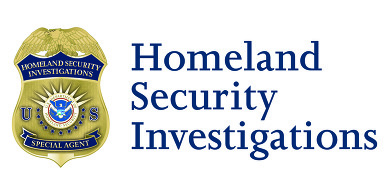
The Bank Secrecy Act (BSA) of 1970 introduced a number of monetary transaction reporting requirements designed to prevent criminal organizations from exploiting the U.S. financial system by moving and stockpiling their illicit funds. These reporting requirements are invaluable tools for law enforcement and are the backbone of the United States’ anti-money laundering program.
The benefits derived from BSA reporting requirements go far beyond the information contained within the four corners of the documents themselves. While Currency Transaction Reports (CTRs), Currency and Monetary Instrument Reports (CMIRs), and other BSA-required reporting documents benefit law enforcement by creating a paper trail of potential criminal activity that allows the investigators to focus on specific transactions and their relationship with ongoing criminal activity, the mere fact that these reporting requirements exist may prove to be the most valuable anti-money laundering tool of all.
The existence of the BSA reporting requirements, and the implementation of stringent and effective anti-money laundering programs built upon these requirements, have forced criminals to resort to more desperate schemes to earn, move, and store their illicit funds. These schemes require criminals to act outside of legitimate channels, which makes their actions more susceptible to detection. As these illicit schemes are detected, “Red Flag” indicators of the scheme can be identified and used to detect other subjects attempting similar illegal acts which can be reported through the use of SARs.

Writing an effective SAR is paramount to the success of law enforcement. Financial institutions that generate well written SARs are the first line of defense in combating money laundering activity. It is essential SAR authors remember their audience when writing SAR narratives. The point of a SAR is to alert law enforcement to suspicious activity. FinCEN’s presentation titled Keys to Writing a Complete and Sufficient SAR Narrative identifies the following as the reasons why it is important to file a SAR:
- SARs identify potential and actual illegal activity:
- Money Laundering
- Terrorist financing
- Other financial fraud and abuse
- SARs assist law enforcement detect and prevent the flow of illicit finds.
- SARs establish emerging threats through analysis of patterns and trends.
- Filing SARs is a requirement under the law.

FinCEN states the narrative section of the SAR should identify the essential elements of the suspicious activity being reported (who, what, where, when, and why), should be a complete account of the activity, and follow a chronological order.
Who is conducting the activity?
- In the narrative, describe the known information about the suspect(s) reported in the appropriate section of the form including, for example, with respect to a senior foreign political figure, title, occupation, or nature of the suspect’s business.
- If more than one individual or business is involved in the suspicious activity, then fully identify all suspects and any known relationships among them possible.
- If a senior foreign political figure is detected as a beneficial owner of a company, provide information on the business.
- A senior foreign political figure may use family members and close associates to facilitate hiding the corruption proceeds. Likewise, suspicious activity may also be conducted by intermediaries, such as an attorney or accountant. If any such relationships are identified, they should be included in the narrative.
- Note whether the senior foreign political figure is the institution’s customer/account holder or another party to the transaction, such as an originator of a wire.
What instruments or mechanisms are being used in the transaction(s)?
- An illustrative list of instruments or mechanisms that could be used in suspicious activity involving corruption includes, but is not limited to, private banking, wire transfers, bank drafts, use of shell companies, or the use of correspondent accounts or escrow accounts.
- If a shell or operational company is being used, note whether the senior foreign political figure is a beneficial owner.
- It may prove useful to note whether the senior foreign political figure is utilizing retail banking services or more generally the type of account utilized.
- Identify all accounts involved in the suspicious activity, including those of known relationships that the filer believes may also be involved.
Where did the suspicious activity take place?
- Identify the jurisdictions where the accounts and subjects are located.
When did the suspicious activity take place?
- If a pattern of activity has been occurring over a period of time, state when the suspicious activity was first noticed, the duration of the activity and whether the activity has changed over time.
- Also, note if a previous SAR was filed.
Why does the filer think the activity is suspicious?
- Describe as fully as possible why the activity or transaction is unusual for that customer. For example, if a family member of a senior foreign political figure is sending or receiving large dollar wire transfers for which there is no apparent reason or which do not correspond with the customer’s profile, this may be an indication that the account is being used to move or hide the proceeds of corruption.

Once the questions above have been answered and the writing begins, FinCEN furthers states the structure of the narrative should follow the principles of basic writing:
-
Introduction
- Provide a brief statement of the SAR’s purpose.
- Generally, describe the known or suspected violation.
- Identify the date of any SARs previously filed on the subject & the purpose of that SAR.
- Indicate any internal investigative numbers used by the filing institution to maintain records of the SAR.
-
Body
- Provide the relevant facts about all parties facilitating the suspect activity or transactions. (Answers the Who?)
- Identify all involved accounts and transactions in chronological order by date and amount – do not use or insert tabular objects, tables, or pre-formatted spread sheets. (Answers the What, Where, When?)
- Explain in detail the filer’s position that the activity or transaction is illegal or suspicious. (Answers the Why?)
- Describe the method of operation of the subject: (Answers the How?)
- Manner in which the activity and/or transactions were completed.
- Any relationship to other transactions, accounts, conductors, etc.
- Subsequent results of the activity.
-
Conclusion
- Summarize the report and include:
- Any planned or completed follow-up actions by the institution.
- Names & telephone numbers of persons with additional information about the reported activity.
- Location within the institution where all SAR-related records are maintained.
 |
Since 2001, more businesses and industries have been required to fill out SAR reports to ensure that increasingly sophisticated money launderers, terrorists, and other criminal organizations don’t attempt to exploit vulnerabilities in the United States’ financial systems. These businesses include casinos, money services businesses, and securities and futures industries.
HSI’s “Cornerstone” initiative is committed to working with the industry to ensure the integrity of the nation’s banking and financial systems. Feedback provided by financial institutions— through the scrupulous filing of SARs in response to legitimately suspicious activity or by sharing information with HSI investigators in other forums—is making a difference.
HSI encourages the public to report suspected suspicious activity through its toll-free Tip Line at 1-866-347-2423 or by completing an online Tip Form available at https://www.ice.gov/webform/ice-tip-form.
For areas outside the United States and Canada, callers should dial 802-872-6199. Hearing-impaired users may call TTY 802-872-6196.
|









